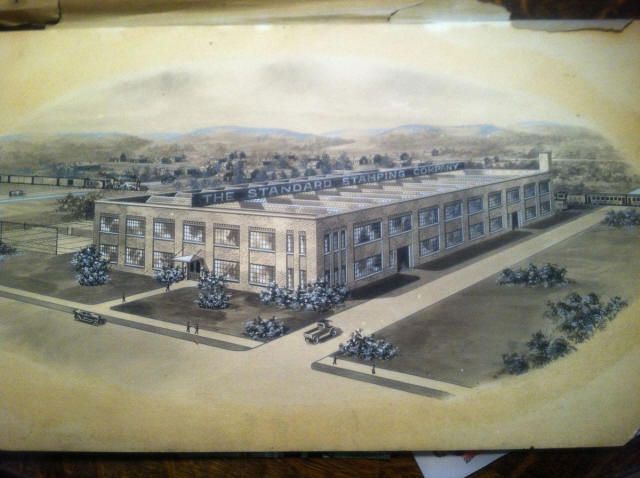
Armstrong Products
------------------------------------------------------------------------------------------------------

Courtesy of Bill Vipperman
----------
The Standard Stamping Co. was the Predecessor
of the Armstrong
Products Corp.
------------------------------------------------------------------------------------------------------
HUNTINGTON -- In Columbus, Ohio, in the 1890s, a young man named Charles
C. Armstrong
decided there had to be a better bicycle light than the one he was using on his
bike.
So he invented his own light and, yes, it was a better one. In 1899, a group of
investors backed him in a new company, the Admiral Lamp Co.,
organized to manufacture and sell his light.
Later the company moved to Marysville, Ohio, began manufacturing lawn sprinklers
and other items and changed its name to the Standard Stamping Co.
In 1917, attracted by the region's abundant natural gas, the company moved to
Huntington and
built a two-story building at 7th Avenue and 1st Street, adjacent to the
Chesapeake & Ohio
Railway tracks. Later additions would significantly increase the structure's
size.
When the firm moved to Huntington, it was still known as Standard Stamping, as
can be seen
in this architectural drawing for its 1917 building. Later, the company's name
was
changed to the Armstrong Manufacturing Co, and still later the name
would be changed again, to the Armstrong Products Corp.
Over the years, Armstrong manufactured a wide array of consumer items, including
small
electric appliances, gas and electric heaters, even metal mailboxes. One of its
most
popular products was the Armstrong Table Stove, a multi-use appliance that
enabled one to fix an entire breakfast -- bacon, eggs and toast -- all at the
same time. Plus you could buy an optional waffle maker insert.
Beginning in World War II and continuing into the cold-war
era, Armstrong supplied a number of items to the military.
Armstrong ceased operation in the early 1980s. In 1984 the building was the
scene of a spectacular fire, and the burnt-out structure was later demolished.
The Kroger Co. then purchased the property and used it to build a supermarket.
-----------------------------------------------------------
Note: This Article and picture appeared in the Herald-Dispatch Newspaper on April 28, 2014.
-----------------------------------------------------------
[ Back ]